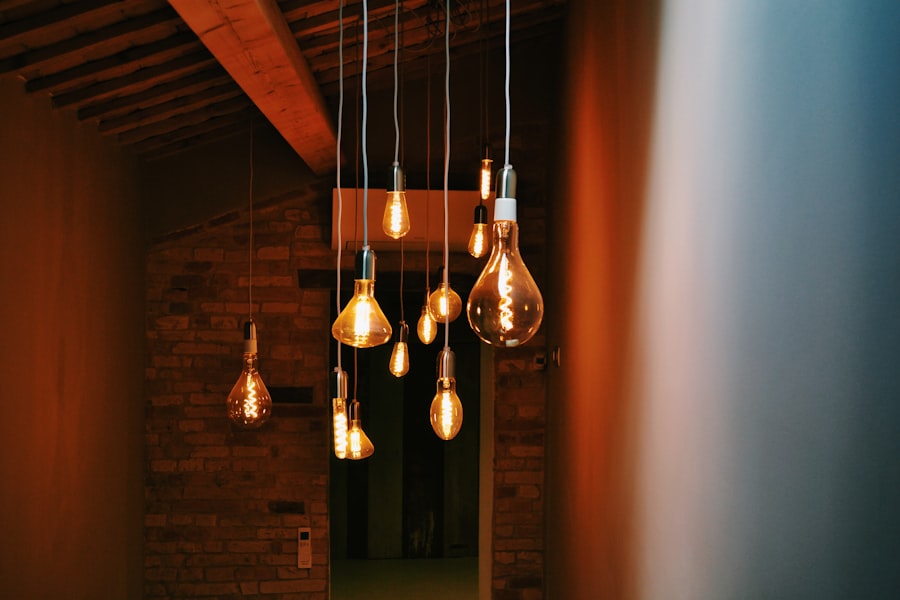Creating an environmentally friendly home need not be costly. Numerous budget-conscious energy-saving improvements can help reduce one’s carbon footprint and lower energy bills. Options range from straightforward modifications such as insulation and draught-proofing to more substantial investments like solar panels and energy-efficient appliances.
These upgrades can enhance a home’s sustainability, increase its value and improve overall quality of life. This article will examine some of the most effective and affordable methods to improve a home’s energy efficiency, thereby reducing costs and environmental impact.
Summary
- Making energy-saving upgrades to your home doesn’t have to break the bank.
- Proper insulation and draught-proofing can significantly reduce energy loss and lower heating bills.
- Switching to energy-efficient lighting, such as LED bulbs, can save money in the long run.
- Smart thermostats and heating controls allow you to easily manage and reduce your energy usage.
- Consider investing in solar panels and other renewable energy sources for long-term energy savings.
- Upgrading to eco-friendly appliances can further reduce your home’s energy consumption and environmental impact.
- With these budget-friendly upgrades, you can create an eco-friendly home without spending a fortune.
Insulation and Draught-proofing
One of the most effective ways to improve the energy efficiency of your home is by ensuring that it is well insulated and draught-proofed. Poor insulation can lead to significant heat loss, meaning that you will need to use more energy to keep your home warm in the winter. By adding insulation to your walls, roof, and floors, you can reduce heat loss and save money on your heating bills.
Additionally, draught-proofing your windows and doors can help to prevent cold air from entering your home, further reducing the need for heating. These upgrades are relatively inexpensive and can often be completed as a DIY project, making them an excellent option for those on a budget. Another effective way to improve insulation is by using curtains or blinds to cover windows during the night.
This can help to prevent heat loss through the glass and keep your home warmer without the need for additional heating. Additionally, using door snakes or draught excluders can help to prevent cold air from entering your home through gaps under doors. By taking these simple steps, you can significantly reduce your energy consumption and make your home more comfortable without spending a fortune.
Energy-Efficient Lighting

Switching to energy-efficient lighting is another simple and cost-effective way to reduce your energy consumption. Traditional incandescent bulbs are highly inefficient, converting only around 10% of the energy they use into light. In contrast, LED bulbs are much more efficient, converting around 90% of the energy they use into light.
This means that they use significantly less electricity to produce the same amount of light, helping you to save money on your energy bills. In addition to being more energy-efficient, LED bulbs also last much longer than traditional incandescent bulbs, meaning that you will need to replace them less frequently. This can further reduce your environmental impact by reducing the amount of waste produced.
While LED bulbs may have a slightly higher upfront cost than traditional bulbs, their long lifespan and energy efficiency make them a cost-effective choice in the long run. Another way to save energy with lighting is by using motion sensors or timers to control when lights are on. This can help to ensure that lights are not left on unnecessarily, reducing energy waste and saving you money.
By making these simple changes to your lighting, you can significantly reduce your energy consumption and make your home more eco-friendly without breaking the bank.
Smart Thermostats and Heating Controls
| Brand | Energy Saving | Compatibility | Price |
|---|---|---|---|
| Nest | Up to 12% | Works with most heating systems | £200 |
| Hive | Average of 130 GBP per year | Works with most heating systems | £179 |
| Tado | Up to 31% | Works with most heating systems | £199 |
Heating and cooling account for a significant portion of a home’s energy consumption, making them a key area for potential savings. Smart thermostats and heating controls offer an effective way to reduce energy waste and save money on heating and cooling bills. These devices allow you to set precise schedules for when your heating or cooling system is in use, ensuring that it is only used when needed.
Additionally, many smart thermostats can be controlled remotely via a smartphone app, allowing you to adjust the temperature of your home from anywhere. By using a smart thermostat, you can ensure that your home is only heated or cooled when necessary, reducing energy waste and saving you money. Additionally, many smart thermostats offer features such as learning algorithms that can adapt to your schedule and preferences, further improving their efficiency.
While smart thermostats may have a higher upfront cost than traditional thermostats, their potential for energy savings means that they can pay for themselves over time. Another way to improve the efficiency of your heating system is by ensuring that it is well maintained. Regular servicing and cleaning can help to ensure that your heating system is operating at its best, reducing energy waste and prolonging its lifespan.
By making these simple changes to your heating controls and maintenance, you can significantly reduce your energy consumption and make your home more eco-friendly without breaking the bank.
Solar Panels and Renewable Energy Sources
While solar panels and other renewable energy sources may require a larger upfront investment, they offer significant long-term savings and environmental benefits. Solar panels can generate electricity from sunlight, reducing your reliance on grid electricity and saving you money on your energy bills. Additionally, many governments offer incentives such as feed-in tariffs or tax credits for installing solar panels, further reducing their cost.
In addition to solar panels, there are other renewable energy sources that can be used to power your home, such as wind turbines or hydroelectric generators. While these options may not be suitable for every home, they offer an effective way to reduce your reliance on fossil fuels and make your home more sustainable. Another way to incorporate renewable energy into your home is by using a green energy tariff from your electricity supplier.
Many suppliers offer tariffs that guarantee a certain percentage of the electricity you use is generated from renewable sources such as wind or solar power. While this may not directly reduce your energy consumption, it can help to support the growth of renewable energy and reduce your overall environmental impact.
Eco-Friendly Appliances

Upgrading to eco-friendly appliances is another effective way to reduce your energy consumption and make your home more sustainable. Many modern appliances are designed with energy efficiency in mind, using advanced technologies to reduce their electricity or water consumption. For example, energy-efficient washing machines use less water and electricity per load, while energy-efficient refrigerators use advanced insulation and compressors to reduce their energy consumption.
When shopping for new appliances, look for those with high Energy Star ratings, as these indicate that they meet strict energy efficiency guidelines. While eco-friendly appliances may have a slightly higher upfront cost than traditional appliances, their potential for long-term savings means that they can be a cost-effective choice in the long run. Another way to reduce the energy consumption of appliances is by using them more efficiently.
For example, using a dishwasher with a full load or washing clothes at lower temperatures can help to reduce their energy consumption. Additionally, using a clothesline instead of a tumble dryer can help to save electricity and reduce your environmental impact.
Creating an Eco-Friendly Home on a Budget
In conclusion, there are numerous budget-friendly ways to make your home more eco-friendly and reduce your energy consumption. From simple changes like insulation and draught-proofing to more significant investments like solar panels and eco-friendly appliances, there are plenty of options to choose from. By making these upgrades, you can not only save money on your energy bills but also reduce your impact on the environment and make your home more comfortable and sustainable.
By taking a proactive approach to improving the energy efficiency of your home, you can make a significant difference without breaking the bank. Whether it’s through simple changes like using LED bulbs or investing in renewable energy sources like solar panels, there are plenty of options available to suit every budget and lifestyle. By making these changes, you can create an eco-friendly home that not only saves you money but also helps to protect the planet for future generations.
If you’re looking for more tips on how to make your home more energy-efficient, check out the Eco Friendly Home and Garden blog. They have a great article on the debate between electric boilers and heat pumps, which can help you decide which option is best for your home. Visit https://ecofriendlyhomeandgarden.com/electric-boiler-vs-heat-pump-which-is-the-better-option-for-your-home/ to learn more.
FAQs
What are the cheapest energy-saving upgrades for British homes?
Some of the cheapest energy-saving upgrades for British homes include installing energy-efficient light bulbs, using draught excluders, insulating hot water tanks, and using radiator reflector panels.
How can energy-efficient light bulbs help save energy in British homes?
Energy-efficient light bulbs, such as LED bulbs, use less electricity than traditional incandescent bulbs, which can help reduce energy consumption and lower electricity bills in British homes.
What are draught excluders and how can they help save energy in British homes?
Draught excluders are devices that are used to block cold air from entering a room through gaps around doors and windows. By using draught excluders, British homeowners can reduce heat loss and save on heating costs.
Why is insulating hot water tanks important for energy saving in British homes?
Insulating hot water tanks can help reduce heat loss, which means that less energy is required to keep the water hot. This can lead to lower energy bills for British homeowners.
How do radiator reflector panels contribute to energy saving in British homes?
Radiator reflector panels are installed behind radiators to reflect heat back into the room, rather than allowing it to be absorbed by the wall. This can help improve the efficiency of the heating system and reduce energy consumption in British homes.


